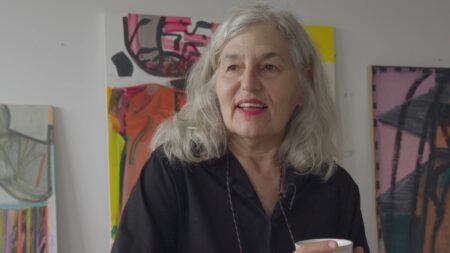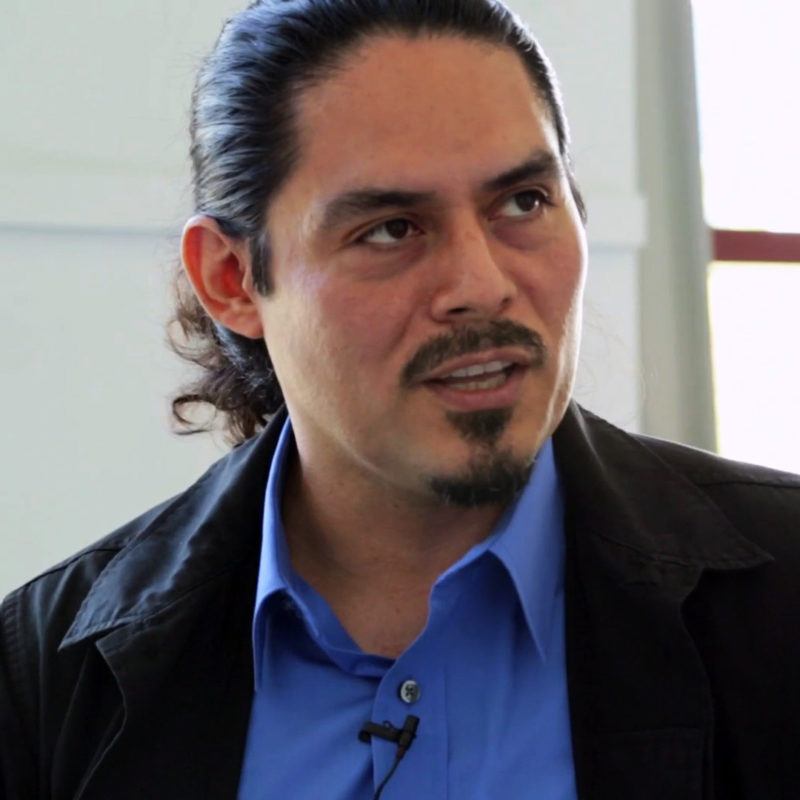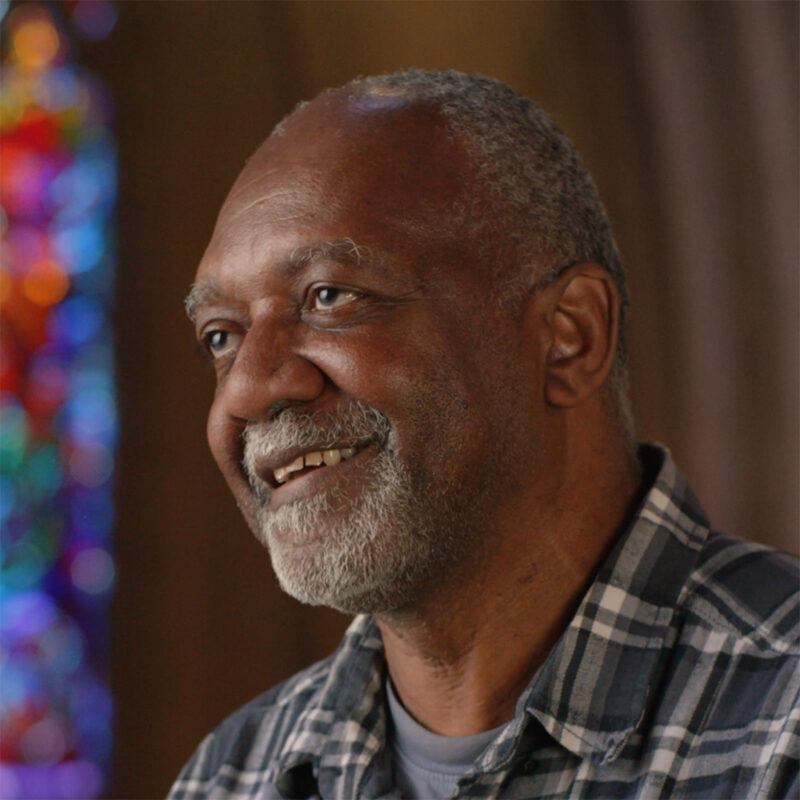Continue playing
(Time remaining: )
Play from beginning
Continue playing "{{ controller.videos[controller.getVideo(controller.currentVideo)].segmentParentTitle}}"
{{controller.videos[controller.getVideo(controller.currentVideo)].title}} has ended.
William Cordova with Kerry James Marshall at Prospect.3
At Dillard University, William Cordova explains his project for New Orlean’s Prospect.3 biennial to Kerry James Marshall, which is rooted in monuments and transformation, “because there is no representation of anything other than the Civil War’s confederate heroes,” says Cordova.
Sitting in his studio, Cordova reminds Marshall of a five-minute conversation they shared at the Art Institute of Chicago in 1995, where Cordova was a student at the time, that shaped his practice moving forward.
More information and creditsCredits
Artist to Artist Created & Produced by: Ian Forster. Editor: Morgan Riles. Cinematography: Ian Forster. Sound: Kyle Sheehan. Production Assistant: Christoph Lerch. Music: Pinch Music. An Art21 Workshop Production. © Art21, Inc. 2014. All Rights Reserved.
Kerry James Marshall at Prospect.3 was supported, in part, by The Lambent Foundation and by individual contributors.
Closed captionsAvailable in English, German, Romanian, Italian, Japanese, Korean, Chinese, Italian
Through the Art21 Translation Project, multilingual audiences from around the globe can contribute translations, making Art21 films more accessible worldwide.
Interested in showing this film in an exhibition or public screening? To license this video please visit Licensing & Reproduction.
William Cordova was born 1971 in Lima, Peru, spent his childhood in Miami, and now lives and works in Lima, New York, and Miami. His multimedia practice includes installation, drawing, and sculpture, on which he has focused his attention in recent years.
The subject matter of Kerry James Marshall’s paintings, installations, and public projects is often drawn from African American popular culture, and is rooted in the geography of his upbringing. Marshall’s work is based on a broad range of art-historical references, from Renaissance painting to black folk art, from El Greco to Charles White. A striking aspect of Marshall’s paintings is the emphatically black skin tone of his figures—a development the artist says emerged from an investigation into the invisibility of Black people in America and the unnecessarily negative connotations associated with darkness. The sheer beauty of his work speaks to an art that is simultaneously formally rigorous and socially engaged.


